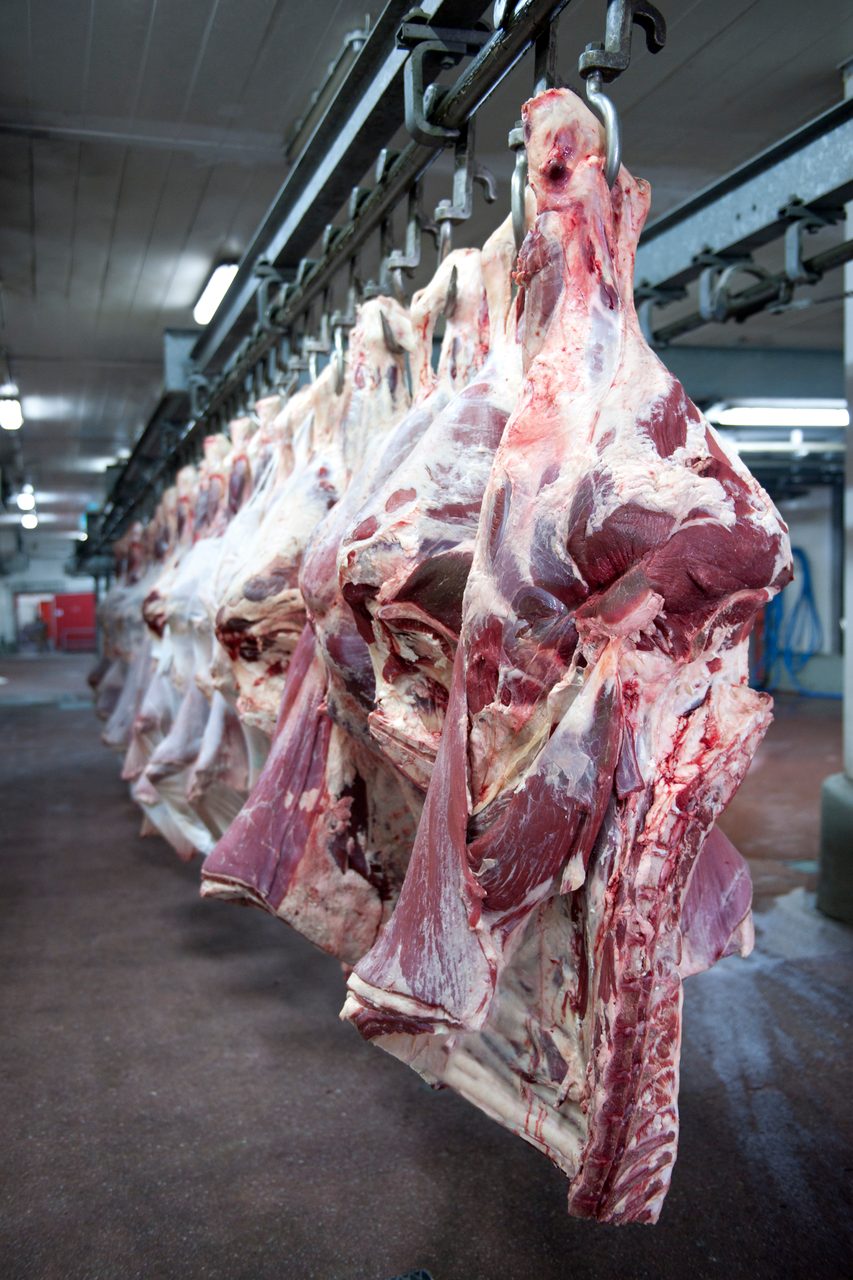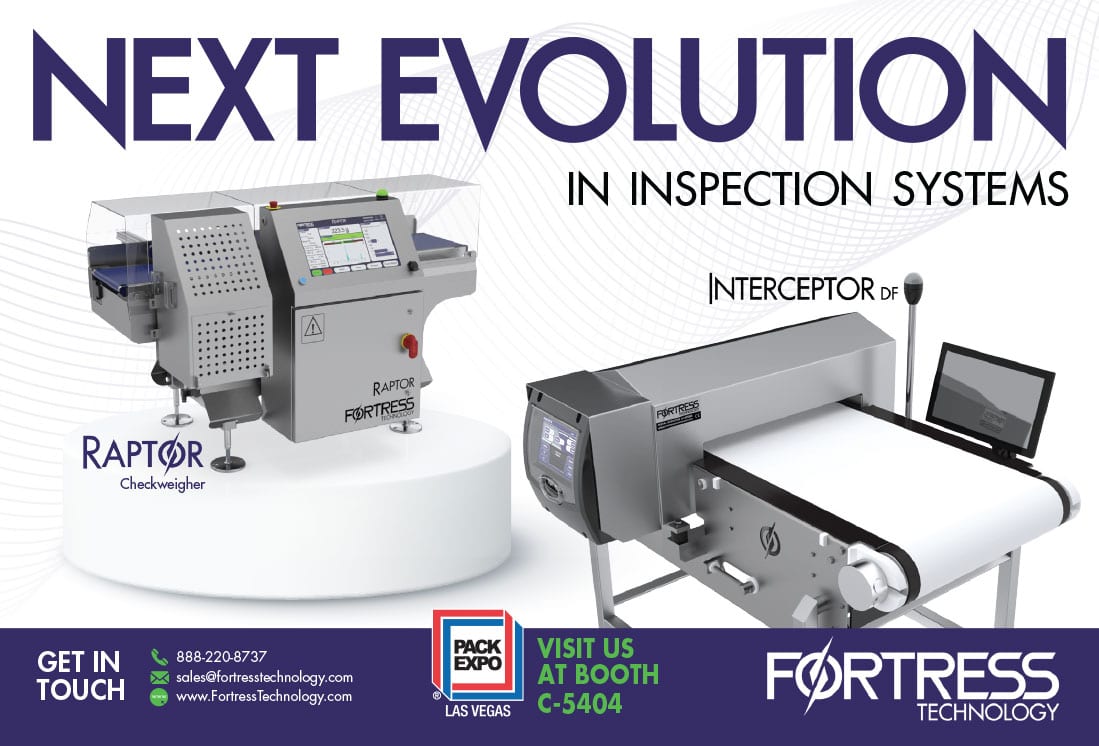meat science review
TECH
Reducing pathogenic bacteria

By Anthony W. Kotula, Ph.D., USDA retired; Kathryn L. Kotula, Ph.D., Investigative Food Sciences, and H. Russell Cross, Ph.D., Texas A&M
from animals during the harvesting process
In 1987, the Meat Science Research Laboratory, Agricultural Research Service of the United States Department of Agriculture, prepared an Israel — United States Binational Industrial Research and Development (BIRD) Foundation funding request to reduce the presence of pathogenic bacteria such as Salmonella on poultry and to more readily remove feathers during processing. The U.S. Department of Agriculture (USDA) was to develop a procedure to reduce Salmonella and other pathogenic bacteria, and scientists from Israel were to improve feather removal. Salmonella bacteria are of concern not only on poultry but all slaughter animals. The proposal was not funded, but the problem remains today.
Dan Flynn, of Food Safety News, reported in 2014 that 19% of poultry and 12% of beef are implicated in foodborne disease outbreaks. Flynn listed 15 pathogens by the Economic Research Service of the USDA study with a mean figure for the problem they represent.
Salmonella (nontyphoidal) is listed as No. 1, representing an economic burden of $3.7 billion. The second highest pathogen of economic impact listed is Toxoplasma gondii. It is a parasite that according to the U.S. Centers for Disease Control and Prevention (CDC) presently exists in 40 million people in the United States. We are also interested in addressing that problem by finding funding for the necessary research to eradicate Toxoplasma gondii, a topic for another day. When the other 13 pathogens are included, the economic burden increases to $12.3 billion.
The first two authors of this article no longer have the laboratory facilities and funding to complete the original research to reduce Salmonella and other pathogenic bacteria from poultry, beef and other food animals. However, the authors believe the subject matter as described below is sufficiently important that funding sources exist, for example through USDA’s National Institute of Food and Agriculture (NIFA) or Agriculture and Food Research Initiative (AFRI) grants to land grant universities and other entities equipped to conduct such research.
In this article we will outline a research procedure to reduce Salmonella and other pathogenic bacteria from poultry, beef and other slaughter animals thus providing the incentive for scientists to develop research procedures in their laboratories and ultimately within the meat and poultry industries. There will be no patents because this procedure will have been published in The National Provisioner. By publishing in The National Provisioner, we encourage industry and food scientists to determine the exact conditions for their situations of this potential method for controlling pathogenic bacteria on slaughter animals and poultry.
Procedure
The proposed method of reducing pathogenic bacteria from fecal material on carcasses is based on closing the rectal sphincter by causing a complete tetanus of those sphincter muscles. Our review of the literature found complete tetanus (and biofeedback) being utilized for humans with rectal incontinence after intersphincteric resection surgery and animals (dogs, cats, rats, etc.) used as models for human medicine. There was nothing found in the literature about tetanus of the rectal sphincter muscle in slaughter animals.
The important factor is that animals defecate upon death. Pathogenic microorganisms found in fecal material are distributed onto the carcass, into scald water for chickens and hogs and into the air sacs of poultry. When tetanus is applied to the sphincter muscles, fecal material that may contain organisms of concern are retained within the gastrointestinal tract for an adequate time to allow evisceration.
Because poultry and hogs are briefly scalded to improve the removal of feathers and hair, respectively, effective prevention of fecal escape through rectal sphincter closure would prevent contamination of the scald water except from any fecal material that was on the feathers or hide prior to submersion. Similarly, only fecal material on the hides and feet of other livestock would be available for contamination.
We claim this procedure can retain fecal material within the lower gastrointestinal tract of all slaughter animals and poultry thus reduce this source of potential microbial contamination.
Electrical stimulation as an example
When author A.W. Kotula was studying for his Ph.D., he was fascinated with “complete tetanus” of muscles in his Experimental Physiology course. He learned from the The Textbook of Physiology, by Tuttle and Schottelius (1961), that repeated stimuli of a muscle can cause the muscle to no longer react to the stimulus because the energy applied to the muscle has been dissipated and the muscle is in complete tetanus. Tuttle and Schottelius reported that when adequate stimuli are applied 1/30 to 1/50 per second, each will elicit a response. When the second stimulus happens within 0.003 seconds after the first, no response occurs because the energy from the previous stimuli has not been replaced.
Out of curiosity, Kotula had technician Bud Rough stimulate the rectal sphincter muscle of each of five chickens in our abattoir at slaughter (USDA, Beltsville). Rough then excised the rectal sphincter muscle and adhering lower gastrointestinal tract. I then suspended the sphincter and lower GI tract and added water to about 8 inches. The sphincter remained closed and held the water about 20 or 30 minutes (yes, minutes), until I determined that was adequate time to allow for the evisceration of the chicken. This informal evaluation was adequate to use complete tetanus for a research project with potential funding from the bird projects with Israeli scientists.
Besides electricity, tetanus of the rectal sphincter muscle in slaughter animals could be potentially achieved by focused application of other means known to cause muscle contractions such as heat (heat shortening); cold (cold shortening); injecting the muscle with selected minerals or chemicals; by microwave, lasers or other forms of energy. Research is needed to determine the exact conditions of each treatment to cause rectal sphincter tetanus for each species.
We have demonstrated that muscles can be placed into complete tetanus by rapidly stimulating them within a short period of time without time for relaxation between successive contractions. Therefore, we maintain that the rectal sphincter muscles of animals can be closed to retain fecal material by creating a complete tetanus in that muscle. When fecal material may well contain pathogenic bacteria, the complete tetanus procedure reduces the dissemination of potential bacteria outside the carcass.
Because complete tetanus can be produced on the rectal sphincter muscle of other slaughter animals, this procedure should be effective for use on all slaughter animals.
The final result is that commercially implementing this process would be an extremely useful tool in improving food safety in the poultry and meat industries. This research needs to become a priority.

